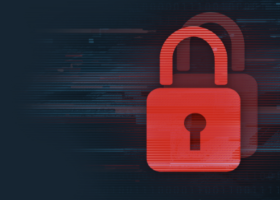What Is Cybersecurity?
Cybersecurity is the protection of hardware, software, and data from cyber threats. Individuals and enterprises use cybersecurity to protect against unauthorized access to systems, data, and networks. Cybersecurity programs, systems, and processes safeguard against malicious attacks that are designed to access, alter, delete, destroy, disrupt, or extort systems and sensitive data.

Often referred to as information security, cybersecurity refers to the practice of ensuring the integrity, confidentiality, and availability (ICA) of information. It is comprised of:
- Risk management processes
- Teams
- Technology tools
- Training
Five Types of Cybersecurity
- 1. Application security
- 2. Cloud security
- 3. Critical infrastructure security
- 4. Information security
- 5. Network security
Cybersecurity Tools
- Anti-malware
- Cloud access security broker (CASB)
- Cloud workload protection platform (CWPP)
- Data loss prevention (DLP)
- Email security
- Encryption tools
- Endpoint protection, detection, and response
- Firewalls
- Identity and access management (IAM)
- Intrusion prevention/detection systems (IPS/IDS)
- Next-generation firewalls (NGFW)
- Security information and event management (SIEM)
- User and entity behavior analytics (UEBA)
- Virtual private networks (VPNs)
- Vulnerability scanners
- Web security
Benefits of Cybersecurity
The objective of cybersecurity processes and procedures is to protect systems and networks from cyberattacks and data breaches. Additional benefits include:
- Business continuity
- Compliance with regulatory requirements
- Confidence in and enhancement of an organization’s reputation
- Expedited recovery time after a breach
- Prevention of unauthorized user access
- Protection for data, end users, endpoint devices, and networks
Organizational Risks of Poor Cybersecurity
Cybersecurity risk can be categorized into three categories.
- 1. Threats
- Typically includes social engineering attacks, DDoS attacks, and advanced persistent threats
- Perpetrated by threat actors that may be associated with nation-states, insiders, and criminal enterprises
- Motivated by financial gain or political agendas
- 2. Vulnerabilities
- A weakness, flaw, or error that can be exploited by attackers to gain unauthorized access
- Elements that can be taken advantage of in a number of ways
- 3. Consequences
- Actual harm or damages that occur as a result of a network disruption
- Includes direct and indirect consequences
- Possible impact on an organization’s finances, operations, reputation, and regulatory compliance status
Potential targets to be protected using cybersecurity include:
- Contract terms and pricing
- Customer data
- Employee data
- Financial data
- Intellectual property
- Product quality and safety
- Strategic planning
- Third- and fourth-party vendors
How to Improve Cybersecurity
The following should be audited to improve cybersecurity. By assessing current efficacy and identifying areas that must be bolstered to ensure optimal protection, your cybersecurity program can be most effective.
- Application security
- Cloud security
- Critical infrastructure security
- Disaster recovery / business continuity planning
- End-user education
- Information or data security
- Network security
- Operational security
- Physical security
Automation that uses artificial intelligence (AI) and machine learning should also be employed in areas with high-volume data streams. This allows for faster and more effective detection of anomalies that could be a sign of cybersecurity threats. The three main areas where this type of automation can be particularly effective are:
- Threat detection
Analyze data to identify known threats, as well as predict new or potential threats. - Threat response
Create and automatically enact security protections when potential cybersecurity threats are detected. - Human augmentation
Help eliminate alert fatigue by automatically triaging low-risk alarms and automating big data analysis and other repetitive tasks.
Common cybersecurity defense tactics that security managers optimize to improve overall cybersecurity are:
- Administering security procedures, training, and testing
- Deploying and monitoring security solutions, such as:
- Data loss prevention
- Data loss protection
- Firewalls
- Intrusion detection
- Encrypting data where necessary
- Ensuring proper configuration of cloud services
- Implementing vulnerability management with internal and third-party scans
- Maintaining secure device configurations, including keeping software up to date and installing vulnerability patches in a timely manner
- Restricting access according to the principle of least privilege
- Recruiting and retaining cybersecurity professionals
- Using penetration testing
Cybersecurity Challenges
At the root of all cybersecurity challenges is their changing nature. Older cyberattacks can morph into new threats. And, as the number of connections continues, exponential growth and the number of entry points requiring defense becomes mind-boggling.
Among the many cybersecurity challenges that must be addressed are:
- While nearly impossible to avoid, bring-your-own-device programs pose multiple cybersecurity challenges, as those devices often have a number of vulnerabilities that can be used to compromise networks and other systems and organizations may not have full control over the devices.
- Increasing amounts of personally identifiable information (PII) being collected by organizations is a draw for cybercriminals who seek to use it for identity theft.
- Malicious insiders pose a tough cybersecurity challenge as they have the potential to leak sensitive information and / or provide others with access to secure networks and systems.
- Outdated hardware that is not advanced enough to run the latest versions of software creates cybersecurity challenges as these systems are highly susceptible to cyberattacks.
- Social engineering schemes that target end-users continue to evolve and grow more sophisticated, making it difficult for employee education programs to keep pace.
- The lack of qualified cybersecurity personnel to analyze, manage, and respond to incidents is not keeping pace with the amount of support needed to defend against cyberattacks.
- Unpatched software continues to be a target of cyberattacks—especially zero-day attacks carried out by cybercrime syndicates.
IoT Cybersecurity Challenges
- Cybercriminals can use exposed communications port(s) to gain privileged access, which enables them to execute mission-critical commands or resources on a device.
- Insecure web interfaces allow cybercriminals to use credential theft attacks to gain unauthorized access to control the application and thus control devices.
- Lack of secure boot processes creates cybersecurity risks, because there is no way to prevent them from running malicious code.
- Legacy operating systems used by older IoT devices are often unsupported, creating vulnerable entry points that cybercriminals can exploit using common vulnerabilities and exposures (CVEs) for attacks.
- Due to the distributed nature of IoT device deployments, limited visibility into device security makes the collection of event log data a challenge.
- Malware targets IoT devices and uses them to deploy distributed denial of service (DDoS) attacks, scan for open ports, or act as a vector for brute force attacks on networks and systems.
- Unencrypted IoT device traffic makes it susceptible to malicious actors who can intercept the data using a man-in-the-middle attack or other eavesdropping methodology to access sensitive data.
- Weak default passwords are set by manufacturers, left in place by organizations, and exploited by cybercriminals who use brute force and dictionary attacks to gain access to the devices.
Types of Cyber Threats
Cybersecurity efforts must contend with myriad cyber-threats from a variety of sources. In general, three types of cyber threats fall into the categories of attacks on confidentiality, integrity, and availability.
- 1. Attacks on confidentiality target personal identifying information (PII) and financial information, which is either exploited by the attacker or sold on the dark web for others to purchase and use.
- 2. Attacks on integrity, often called leaks, involve cybercriminals gaining access to and releasing sensitive information to cause damage to the reputations of individuals or organizations.
- 3. Attacks on availability, which include ransomware attacks, block users from accessing data until they pay a fee or ransom.
Cyber threats come in many forms, with attacks involving a number of different approaches to steal sensitive information or cause service disruptions. A few of the more prevalent types of cyber threats include:
- Advanced persistent threats (APTs)
- Blockchain and cryptocurrency attacks
- Credential stuffing
- Cross-site scripting attacks (XSS attacks)
- Cryptojacking
- Deep fakes
- Distributed denial-of-service (DDoS) attacks
- Drive-by attacks
- Insider threats
- Machine learning and AI attacks
- Malware (e.g., adware, remote access, rootkit, spyware, trojans, viruses, worms)
- Man-in-the-middle (MitM) attacks
- Password theft
- Ransomware (e.g., crypto-malware, lockers, scareware)
- Social engineering (e.g., phishing, spear phishing)
- SQL injection
- Traffic interception
- Water hole attack
- Zero-day exploits
Additional Considerations to Enhance Cybersecurity
Cybersecurity is a never-ending battle between security teams and cybercriminals, both of whom are singularly focused on data loss, privacy exploitation, and vulnerabilities. Organizations should:
- Adopt multi-factor authentication
- Enforce strong password policies
- Evaluate the organization’s attack surface
- Implement privileged access management (PAM)
- Take a centralized approach to cybersecurity
- Use predictive and preventive cybersecurity
- Keep all software updated
- Back up all files regularly
- Train employees to never open email attachments or click links in emails from unknown sources
Egnyte has experts ready to answer your questions. For more than a decade, Egnyte has helped more than 16,000 customers with millions of customers worldwide.
Last Updated: 7th January, 2022



